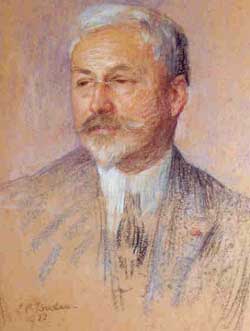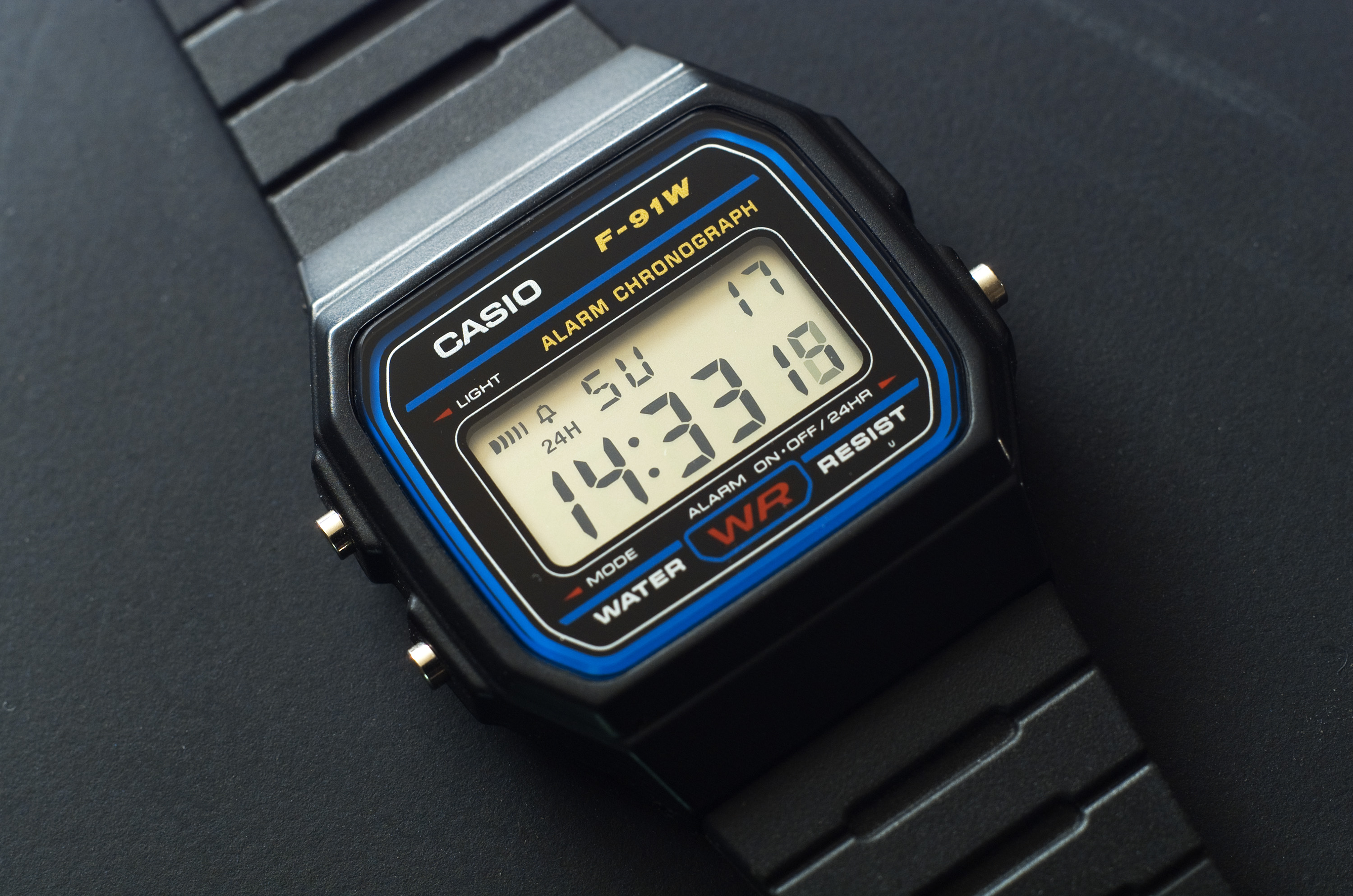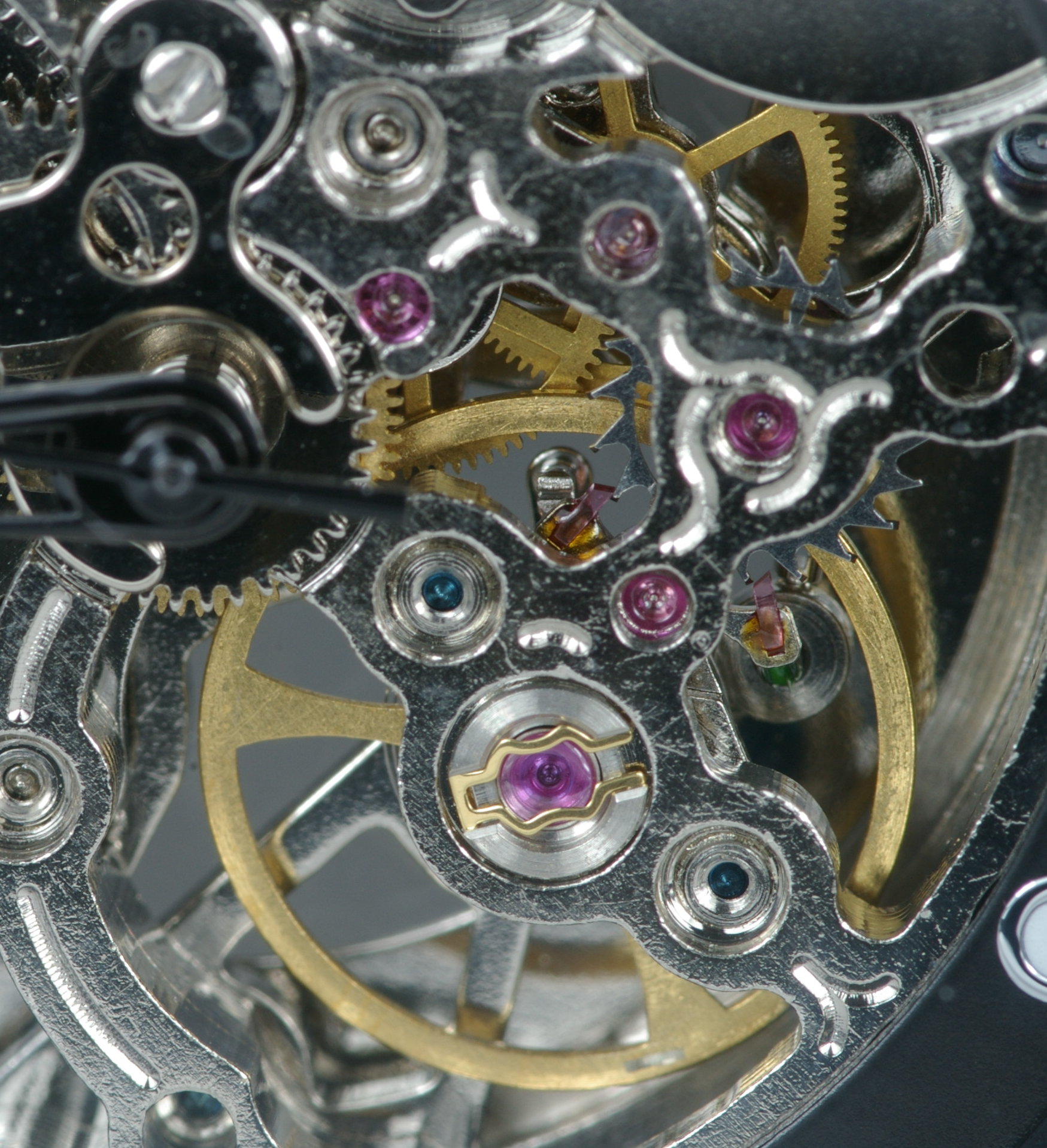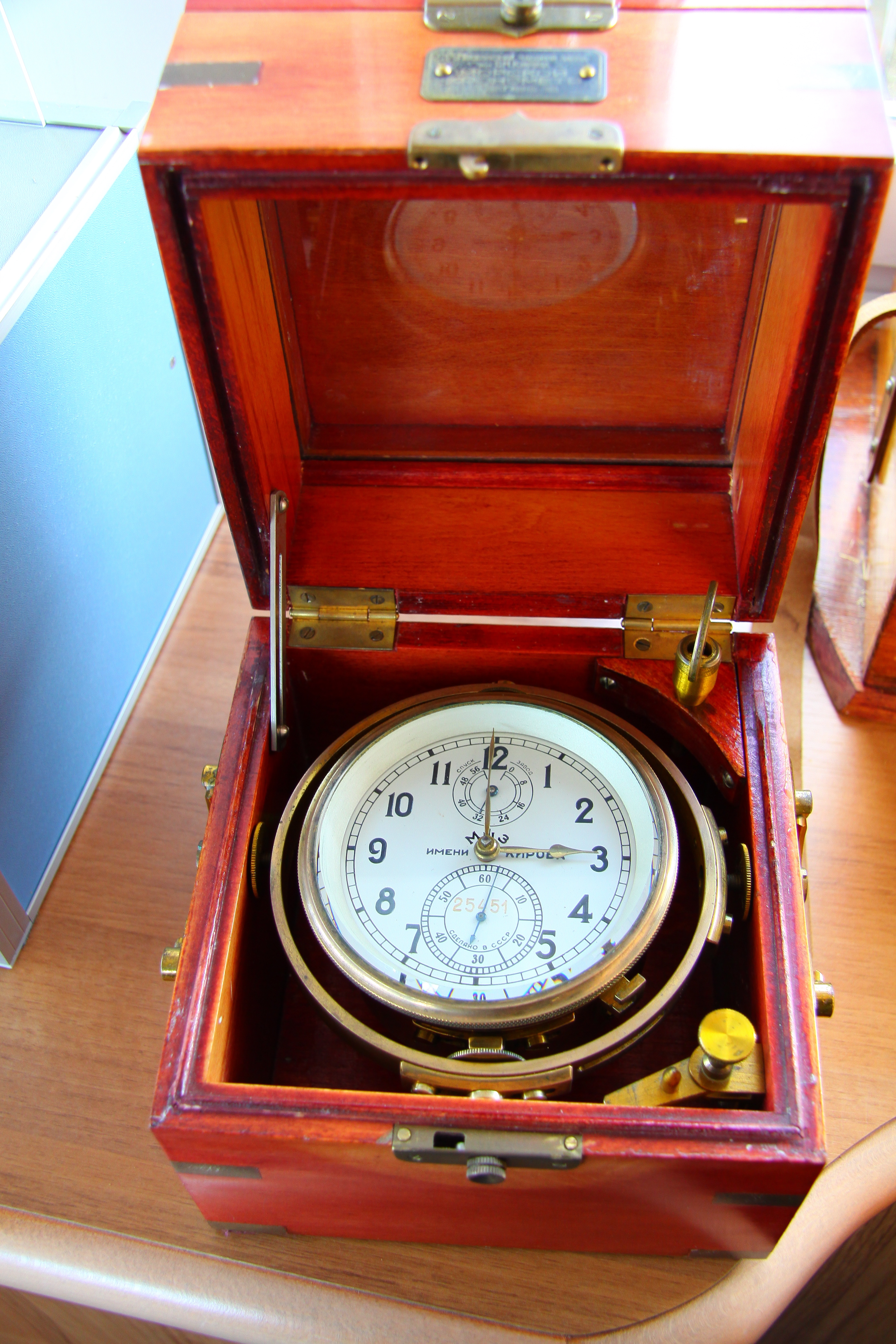|
Elinvar
Elinvar is a nickel–iron–chromium alloy notable for having a modulus of elasticity which does not change much with temperature changes. Metal The name is a contraction of the French ('invariable elasticity'). It was invented by Charles Édouard Guillaume, a Swiss physicist who also invented Invar, another alloy of nickel and iron with very low thermal expansion. Guillaume won the 1920 Nobel Prize in Physics for these discoveries, which shows how important these alloys were for scientific instruments. Elinvar originally consisted of 52% iron, 36% nickel, and 12% chromium. It is almost non-magnetic, and corrosion resistant. Other variations of the Elinvar alloy are * Iron- and cobalt-based ferromagnetic Elinvar alloy * Manganese- and chromium-based antiferromagnetic Elinvar alloy * Palladium-based non-magnetic Elinvar alloy The largest use of Elinvar was in balance springs for mechanical watches and chronometers. A major cause of inaccuracy in watches and clocks was that ... [...More Info...] [...Related Items...] OR: [Wikipedia] [Google] [Baidu] |
Balance Spring
A balance spring, or hairspring, is a spring attached to the balance wheel in mechanical timepieces. It causes the balance wheel to oscillate with a resonant frequency when the timepiece is running, which controls the speed at which the wheels of the timepiece turn, thus the rate of movement of the hands. A regulator lever is often fitted, which can be used to alter the free length of the spring and thereby adjust the rate of the timepiece. The balance spring is an essential adjunct to the balance wheel, causing it to oscillate back and forth. The balance spring and balance wheel together form a harmonic oscillator, which oscillates with a precise period or "beat" resisting external disturbances and is responsible for timekeeping accuracy. The addition of the balance spring to the balance wheel around 1657 by Robert Hooke and Christiaan Huygens greatly increased the accuracy of portable timepieces, transforming early pocketwatches from expensive novelties to useful timekeepe ... [...More Info...] [...Related Items...] OR: [Wikipedia] [Google] [Baidu] |
Charles Édouard Guillaume
Charles Édouard Guillaume (; 15 February 1861 – 13 June 1938) was a Swiss physicist who received the Nobel Prize in Physics in 1920 "for the service he had rendered to precision measurements in physics by his discovery of anomalies in nickel steel alloys". In 1919, he gave the fifth Guthrie Lecture at the Institute of Physics in London with the title "The Anomaly of the Nickel-Steels". Personal life Charles-Edouard Guillaume was born in Fleurier, Switzerland, on 15 February 1861. Guillaume received his early education in Neuchâtel, and obtained a doctoral degree in Physics at ETH Zurich in 1883. Guillaume was married in 1888 to A. M. Taufflieb, with whom he had three children. He died on 13 June 1938 at Sèvres, aged 77. Scientific career Guillaume was head of the International Bureau of Weights and Measures.Gould, p.201. He also worked with Kristian Birkeland, serving at the Observatoire de Paris – Section de Meudon. He conducted several experiments with ... [...More Info...] [...Related Items...] OR: [Wikipedia] [Google] [Baidu] |
Nickel
Nickel is a chemical element; it has symbol Ni and atomic number 28. It is a silvery-white lustrous metal with a slight golden tinge. Nickel is a hard and ductile transition metal. Pure nickel is chemically reactive, but large pieces are slow to react with air under standard conditions because a passivation layer of nickel oxide forms on the surface that prevents further corrosion. Even so, pure native nickel is found in Earth's crust only in tiny amounts, usually in ultramafic rocks, and in the interiors of larger nickel–iron meteorites that were not exposed to oxygen when outside Earth's atmosphere. Meteoric nickel is found in combination with iron, a reflection of the origin of those elements as major end products of supernova nucleosynthesis. An iron–nickel mixture is thought to compose Earth's outer and inner cores. Use of nickel (as natural meteoric nickel–iron alloy) has been traced as far back as 3500 BCE. Nickel was first isolated and classifie ... [...More Info...] [...Related Items...] OR: [Wikipedia] [Google] [Baidu] |
Palladium
Palladium is a chemical element; it has symbol Pd and atomic number 46. It is a rare and lustrous silvery-white metal discovered in 1802 by the English chemist William Hyde Wollaston. He named it after the asteroid Pallas (formally 2 Pallas), which was itself named after the epithet of the Greek goddess Athena, acquired by her when she slew Pallas. Palladium, platinum, rhodium, ruthenium, iridium and osmium form together a group of elements referred to as the platinum group metals (PGMs). They have similar chemical properties, but palladium has the lowest melting point and is the least dense of them. More than half the supply of palladium and its congener platinum is used in catalytic converters, which convert as much as 90% of the harmful gases in automobile exhaust (hydrocarbons, carbon monoxide, and nitrogen dioxide) into nontoxic substances (nitrogen, carbon dioxide and water vapor). Palladium is also used in electronics, dentistry, medicine, hydrogen purification ... [...More Info...] [...Related Items...] OR: [Wikipedia] [Google] [Baidu] |
Ferrous Alloys
In chemistry, iron(II) refers to the element iron in its +2 oxidation state. The adjective ''ferrous'' or the prefix ''ferro-'' is often used to specify such compounds, as in ''ferrous chloride'' for iron(II) chloride (). The adjective ''ferric'' is used instead for iron(III) salts, containing the cation Fe3+. The word ''ferrous'' is derived from the Latin word , meaning "iron". In ionic compounds (salts), such an atom may occur as a separate cation (positive ion) abbreviated as Fe2+, although more precise descriptions include other ligands such as water and halides. Iron(II) centres occur in coordination complexes, such as in the anion ferrocyanide, , where six cyanide ligands are bound the metal centre; or, in organometallic compounds, such as the ferrocene , where two cyclopentadienyl anions are bound to the FeII centre. Ferrous ions in biology All known forms of life require iron. Many proteins in living beings contain iron(II) centers. Examples of such metalloproteins ... [...More Info...] [...Related Items...] OR: [Wikipedia] [Google] [Baidu] |
Nivarox
Nivarox, also known as Nivarox - FAR SA is a Swiss company formed by a merger in 1984 between Nivarox SA and Fabriques d' Assortiments Réunis (FAR). It is currently owned by the Swatch Group. Nivarox is also the trade name of the metallic alloy from which its products are fabricated. Its notable property is that its coefficient of elasticity is remarkably constant with temperature. Nivarox is most famous for producing hairsprings that are attached to the balance wheel inside a mechanical watch movement, as well as mainsprings which provide the motive power for the watch. Nivarox was developed for use in watch hairsprings in 1933 by Reinhard Straumann in his Waldenbourg laboratory. FAR was the corporate name chosen in 1932 for the entity comprising several companies and subsidiaries located in Le Locle Switzerland, which at the time manufactured various watch components. Nivarox alloy As a trade name, Nivarox is an acronym from the German . The Nivarox alloy is a nickel iron a ... [...More Info...] [...Related Items...] OR: [Wikipedia] [Google] [Baidu] |
Temperature Coefficient
A temperature coefficient describes the relative change of a physical property that is associated with a given change in temperature. For a property ''R'' that changes when the temperature changes by ''dT'', the temperature coefficient α is defined by the following equation: :\frac = \alpha\,dT Here α has the dimension of an inverse temperature and can be expressed e.g. in 1/K or K−1. If the temperature coefficient itself does not vary too much with temperature and \alpha\Delta T \ll 1, a linear approximation will be useful in estimating the value ''R'' of a property at a temperature ''T'', given its value ''R''0 at a reference temperature ''T''0: :R(T) = R(T_0)(1 + \alpha\Delta T), where Δ''T'' is the difference between ''T'' and ''T''0. For strongly temperature-dependent α, this approximation is only useful for small temperature differences Δ''T''. Temperature coefficients are specified for various applications, including electric and magnetic properties of materials a ... [...More Info...] [...Related Items...] OR: [Wikipedia] [Google] [Baidu] |
Temperature-compensated Balance Wheel
A balance wheel, or balance, is the timekeeping device used in mechanical watches and small clocks, analogous to the pendulum in a pendulum clock. It is a weighted wheel that rotates back and forth, being returned toward its center position by a spiral torsion spring, known as the ''balance spring'' or ''hairspring''. It is driven by the escapement, which transforms the rotating motion of the watch gear train into impulses delivered to the balance wheel. Each swing of the wheel (called a "tick" or "beat") allows the gear train to advance a set amount, moving the hands forward. The balance wheel and hairspring together form a harmonic oscillator, which due to resonance oscillates preferentially at a certain rate, its resonant frequency or "beat", and resists oscillating at other rates. The combination of the mass of the balance wheel and the elasticity of the spring keep the time between each oscillation or "tick" very constant, accounting for its nearly universal use as the tim ... [...More Info...] [...Related Items...] OR: [Wikipedia] [Google] [Baidu] |
Chronometers
A clock or chronometer is a device that measures and displays time. The clock is one of the oldest human inventions, meeting the need to measure intervals of time shorter than the natural units such as the day, the lunar month, and the year. Devices operating on several physical processes have been used over the millennia. Some predecessors to the modern clock may be considered "clocks" that are based on movement in nature: A sundial shows the time by displaying the position of a shadow on a flat surface. There is a range of duration timers, a well-known example being the hourglass. Water clocks, along with sundials, are possibly the oldest time-measuring instruments. A major advance occurred with the invention of the verge escapement, which made possible the first mechanical clocks around 1300 in Europe, which kept time with oscillating timekeepers like balance wheels., pp. 103–104., p. 31. Traditionally, in horology (the study of timekeeping), the term ''clock'' was us ... [...More Info...] [...Related Items...] OR: [Wikipedia] [Google] [Baidu] |
Balance Wheel
A balance wheel, or balance, is the timekeeping device used in mechanical watches and small clocks, analogous to the pendulum in a pendulum clock. It is a weighted wheel that rotates back and forth, being returned toward its center position by a spiral torsion spring, known as the '' balance spring'' or ''hairspring''. It is driven by the escapement, which transforms the rotating motion of the watch gear train into impulses delivered to the balance wheel. Each swing of the wheel (called a "tick" or "beat") allows the gear train to advance a set amount, moving the hands forward. The balance wheel and hairspring together form a harmonic oscillator, which due to resonance oscillates preferentially at a certain rate, its resonant frequency or "beat", and resists oscillating at other rates. The combination of the mass of the balance wheel and the elasticity of the spring keep the time between each oscillation or "tick" very constant, accounting for its nearly universal use as ... [...More Info...] [...Related Items...] OR: [Wikipedia] [Google] [Baidu] |
Elasticity (physics)
In physics and materials science, elasticity is the ability of a body to resist a distorting influence and to return to its original size and shape when that influence or force is removed. Solid objects will deform when adequate loads are applied to them; if the material is elastic, the object will return to its initial shape and size after removal. This is in contrast to ''plasticity'', in which the object fails to do so and instead remains in its deformed state. The physical reasons for elastic behavior can be quite different for different materials. In metals, the Crystal structure, atomic lattice changes size and shape when forces are applied (energy is added to the system). When forces are removed, the lattice goes back to the original lower energy state. For rubber elasticity, rubbers and other polymers, elasticity is caused by the stretching of polymer chains when forces are applied. Hooke's law states that the force required to deform elastic objects should be Prop ... [...More Info...] [...Related Items...] OR: [Wikipedia] [Google] [Baidu] |
Marine Chronometer
A marine chronometer is a precision timepiece that is carried on a ship and employed in the determination of the ship's position by celestial navigation. It is used to determine longitude by comparing Greenwich Mean Time (GMT), and the time at the current location found from observations of celestial bodies. When first developed in the 18th century, it was a major technical achievement, as accurate knowledge of the time over a long sea voyage was vital for effective navigation, lacking electronic or communications aids. The first true chronometer was the life work of one man, John Harrison, spanning 31 years of persistent experimentation and testing that revolutionized naval (and later aerial) navigation. The term ''wikt:chronometer, chronometer'' was coined from the Greek words () (meaning time) and (meaning measure). The 1713 book ''Physico-Theology'' by the English cleric and scientist William Derham includes one of the earliest theoretical descriptions of a marine chronome ... [...More Info...] [...Related Items...] OR: [Wikipedia] [Google] [Baidu] |







